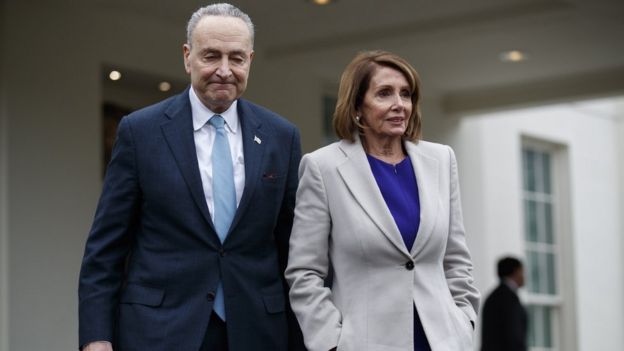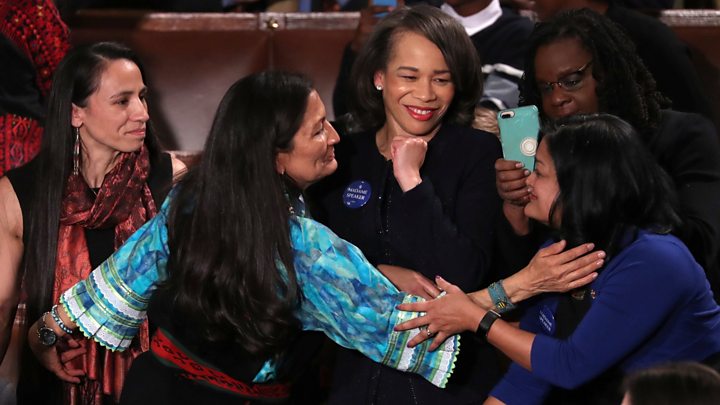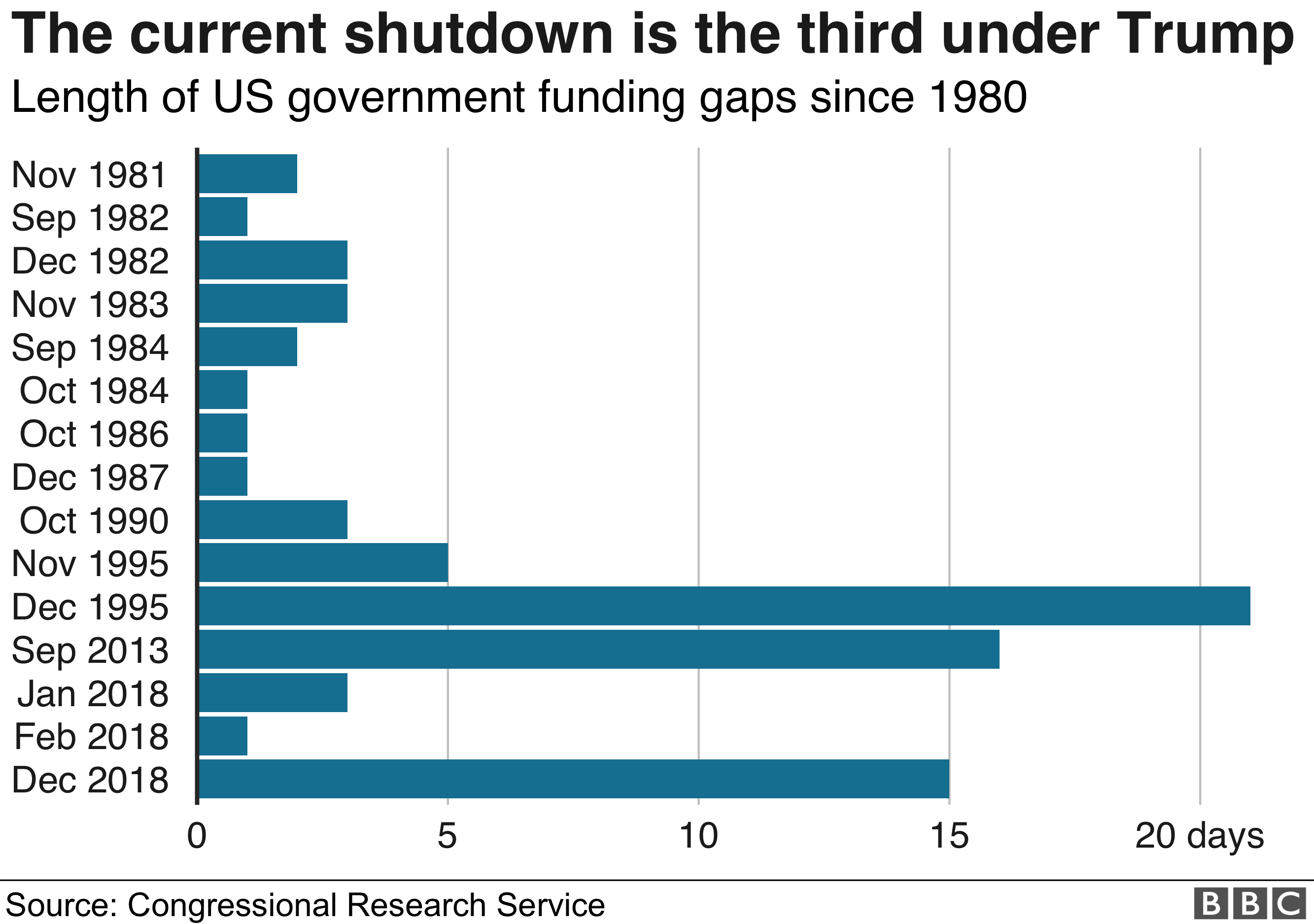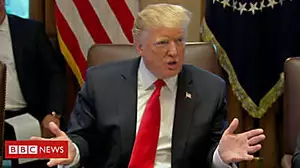
US President Donald Trump has said he could declare a national emergency to build a US-Mexico border wall without the approval of Congress.
It came after he met senior Democrats, who refused his requests for funding.
The stand-off has seen Mr Trump withhold support for a bill to fully fund the government until he gets money for the border wall.
He said he was prepared for the partial government shutdown - now in its third week - to last years.
Around 800,000 federal workers have been without pay since 22 December.
Trump aides and lawmakers will meet later on Saturday in a fresh bid to resolve the impasse.
What happened in Friday's meeting with Democrats?
The Republican president initially gave a positive account of the 90-minute meeting at the White House, describing it as "very productive".
But when asked whether he had considered using emergency presidential powers to bypass congressional approval of funding, Mr Trump said he had.
"I may do it. We can call a national emergency and build it very quickly. That's another way of doing it."
 EPA
EPA
"I'm very proud of doing what I'm doing," the president added. "I don't call it a shutdown, I call it doing what you have to do for the benefit and safety of our country."
House Speaker Nancy Pelosi said Friday's meeting had been "contentious", while Senate Democratic leader Chuck Schumer said: "We told the president we needed the government open. He resisted."
Can Trump declare a national emergency?
Anthony Zurcher, BBC News, Washington
Donald Trump says he can declare a "national emergency" and build his promised wall along the border without congressional approval. If that's the case, the question becomes why he doesn't go ahead and do that. Why put federal workers through the pain of forgoing pay and hamstring key government agencies, including the Department of Homeland Security, if he could bypass Democratic objections with the snap of his presidential fingers?
The answer is because the solution isn't that simple. There are provisions of US law that allow the president to direct military construction projects during war or national emergency, but that money would have to come from Defence Department funds allocated by Congress for other purposes. Such a move may prompt Congress, including Republicans, to push back.
Then there's the inevitable legal challenge from Democrats to such an exercise of presidential authority. Any presidential order to build a wall would be met by an equally imposing wall of court filings blocking its construction.
The president's latest suggestions are best viewed as simply another attempt to gain the upper hand in negotiations with Democrats.
This may not be a threat, more a bluff.
What's the background?
Democrats, who now hold the majority in the House, passed spending bills on Thursday to reopen the government, including $1.3bn (£1bn) of border security funds until 8 February.
But the legislation cannot take effect unless it passes the Republican-controlled Senate, where leader Mitch McConnell said his party would not back any measure without the president's support.

The Kentucky senator called the Democratic budget "a time-wasting act of political posturing".
In Friday's news conference, Mr Trump also told reporters he might consider asking his cabinet to decline a $10,000 raise that is due to take effect because a pay freeze has expired as an inadvertent result of the shutdown.
The fiscal fiasco began when Congress and Mr Trump failed to reach an agreement over a budget bill in December.

The Republicans had passed an initial funding bill including $5bn (£4bn) for the wall, when they still had a majority in the House, but they could not get the necessary 60 votes in the 100-seat Senate.
Two vulnerable Republican senators up for re-election in 2020 - Cory Gardner of Colorado and Susan Collins of Maine - have broken ranks to back approving the budget and ending the shutdown.

The White House is again floating the idea of a deal for "Dreamers" - immigrants who illegally entered the US as children.
Democrats want to ensure that these individuals are shielded from deportation, but have insisted that they will not support a deal over wall funding.
Vice-President Mike Pence told Fox News the deal was being "talked about", but that Mr Trump said no deal was possible "without a wall".
What does the partial shutdown mean?
- About 25% of the US federal government has no funding
- Nine departments have been affected, including Homeland Security, Justice, Housing, Agriculture, Commerce, Interior, and the Treasury
- Native American tribes who receive substantial federal funding are struggling
- National Parks have become hazardous without staff

More women than ever before won seats in Congress in the 2018 mid-terms.
US & Canada
US grand jury extended in Russia inquiry
- 5 January 2019
- US & Canada
SPORT 90-year-old cyclist fails drugs test
- 5 January 2019
- Cycling
Lawmaker's Trump profanity sparks furore
- 4 January 2019
- US & Canada












No comments:
Post a Comment